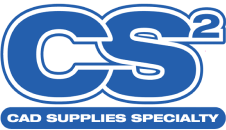Inkjet and solvent printing are two dominant methods in the printing industry, each with its own strengths and ideal applications. Understanding their differences can help you choose the right technology for your needs.
Inkjet Printing operates by ejecting tiny droplets of ink onto a substrate through a series of nozzles. This technology is popular for its high resolution and versatility, making it suitable for everything from photo printing to document production. Inkjet printers use either dye-based or pigment-based inks, with the latter offering better resistance to water and UV light. The ability to print on a wide variety of substrates, including paper, canvas, and even fabrics, makes inkjet printing a versatile option for both home and professional use. However, inkjet printing can be slower and more expensive due to the cost of inks.
Solvent Printing, on the other hand, uses inks dissolved in a solvent, allowing for strong adhesion to non-porous surfaces like vinyl. This makes it ideal for producing durable, large-format prints such as outdoor banners and vehicle wraps. Solvent inks are known for their resistance to weather, UV light, and abrasion, making them a preferred choice for outdoor applications. Traditional solvent printing, however, involves higher levels of volatile organic compounds (VOCs), requiring proper ventilation and environmental considerations.
Eco-solvent Printing has emerged as a solution to the environmental concerns associated with traditional solvent inks. Eco-solvent inks emit fewer VOCs, making them safer and more environmentally friendly while still offering the durability and versatility needed for both indoor and outdoor use. These inks are compatible with a wide range of substrates and maintain high-quality output, making them an increasingly popular choice for businesses seeking sustainable printing solutions.
In summary, inkjet printing is ideal for high-quality, versatile applications, while solvent printing, especially eco-solvent, excels in durability and environmental sustainability for large-scale and outdoor projects.


